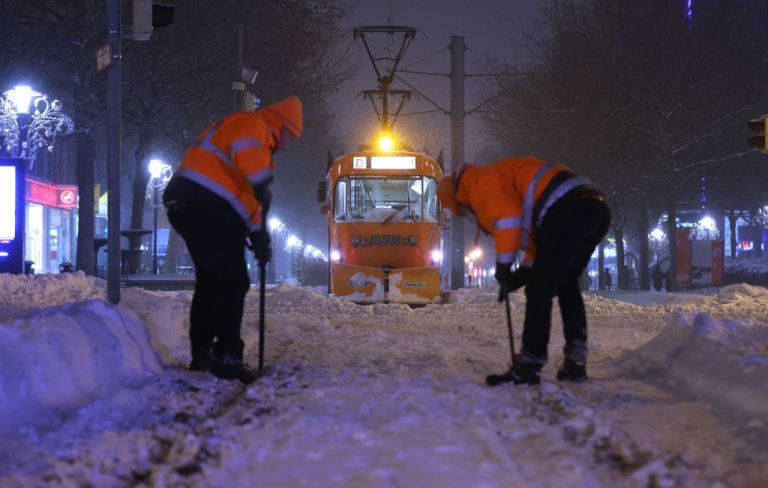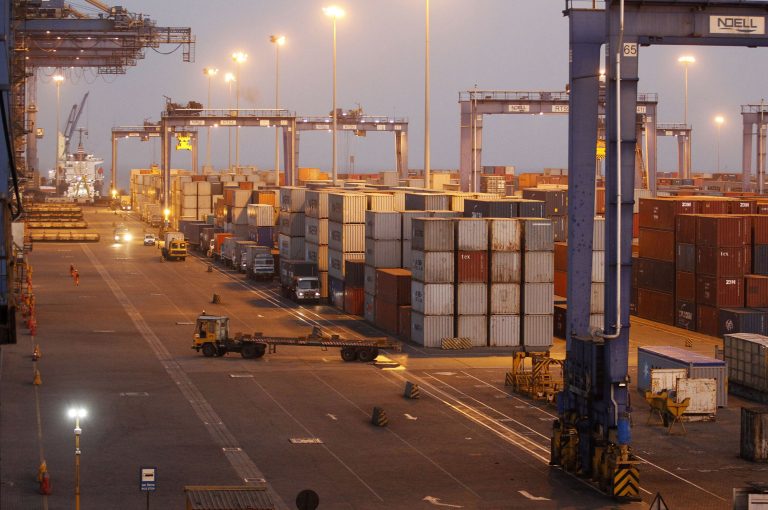Russia’s state owned natural gas distributor Gazprom warned on July 13 that finagling by the government of Canada has made the prospect of what some analysts have called a “doomsday scenario” lying ahead for Europe all the more likely to manifest.
Everything revolves around Europe’s Nord Stream 1 natural gas pipeline, which has the capacity between itself and its twin Nord Stream 2, to deliver 55 billion cubic meters of natural gas from Russia to Europe on an annual basis.
According to a General Background Paper on the Nord Stream website, Russia’s Gazprom owns a 51 percent stake in the delivery system, with Germany owning 15.5 percent, and France and the Netherlands owning 9 percent.
In mid-June, Gazprom cut the flow of natural gas through Nord Stream 1 by 60 percent.
MORE ON ECONOMIC CRISIS
- Panama Faces National Protests, Strikes Over Gas and Food Prices
- Massive Protests Hit Albania Over Inflation, Fuel Prices
- Sri Lankans Burn President’s House Down After Government Bans Sales of Gasoline and Propane; Resignation Pending
- Biden Admin Selling US Oil Reserves to China, Europe Amid Energy Crisis
However, the announcement actually amounted to a decrease of only 20 percent as it came just a day after Russia cut output by 40 percent amid its trade war with the NATO bloc surrounding the invasion of Ukraine.
Success
You are now signed up for our newsletter
Success
Check your email to complete sign up
The stated reason, however, for the additional reduction was not a political or economic one, Gazprom stated, but resulting from equipment being repaired by Siemens Energy at a Canadian factory being unable to be released because of sanctions by the Trudeau Administration, AP reported.
July 1 analysis by Zero Hedge showed that Europe’s natural gas market started to price for the major risk that supply would face major shortage during the winter, although current supplies were fine.
The same situation occurred in the European electricity market, as most electricity is simply generated by burning natural gas to power turbines.
July 10 reporting by Bloomberg stated that, based on data from Cornwall Insights, that the average UK household would pay as much as £3,244 ($3,886 approx.) for gas and electricity starting in October, a figure already up almost 65 percent.
And the situation took a turn for the worse when regularly scheduled maintenance on the Nord Stream 1 pipeline for the period of July 11 to 21 commenced, with analysts, pundits, and politicians fearing that Russia would not restore service because of tense geopolitical relations.
A July 12 article by Bloomberg titled Markets Plan Doomsday Scenarios If Russia Turns Off the Gas said speculators and analysts feared very extreme outcomes.
One analysis by UBS AG Bloomberg cited was summarized as stating the results, “Would reduce corporate earnings by more than 15%. The market selloff would exceed 20% in the Stoxx 600 and the euro would drop to 90 cents. The rush for safe assets would drive benchmark German bund yields to 0%.”
UBS Chief Economist Arend Kapteyn stated in the missive cited more ominously that, “We stress that these projections should be seen as rough approximations and by no means as a worse-case scenario.”
“We could easily conceive economic disruptions that lead to more negative growth outcomes,” he added.
Zero Hedge quoted Deutsche Bank analyst Jim Reid as stating “what happens to Russian gas in H2 is potentially an even bigger story” than even the looming threat of a 100+ basis point interest rate hike by the Federal Reserve during the July 26-27 FOMC meeting.
Canadian tensions
Pressure on the situation appeared to have abated before the shutdown began as on July 10, the Trudeau Administration announced — in a surprisingly reconciliatory move to the Russia it has often denounced — that it would green light the return of the Nord Stream 1 turbine repaired by Siemens’s Canadian outlet to Russia.
Reuters reported that the Government stated it had issued a “time-limited and revocable permit” to return the hardware, which would also, at least in principle, restore the 20 percent supply claimed to be disrupted by the malfunctioning hardware.
The move vexxed Zelensky, who took to criticizing Canada’s decision to in one of the short videos he’s become famous for, wearing a hoodie and a t-shirt in front of a green screen.
Zelensky — apparently unconcerned about the energy supply of his European NATO-member neighbors who have donated so many billions of dollars of hardware and financial support to Ukraine — called the decision an “absolutely unacceptable exception to the sanctions regime against Russia.
Canada, however, remained unmoved, at least in terms of its public facing communications and messaging.
July 13 reporting by Canada’s establishment-left Globe and Mail quoted Prime Minister Trudeau as displaying very rational and level-headed reasoning in support of returning the turbine, “The sanctions are aimed at Putin and his enablers and aren’t designed to harm our allies and their populations,” he said.
The article added that Global Affairs Canada actually gave Siemens a two-year exception that would allow the import and export of up to six units for repair.
Siemens Canada’s repair facility is in Montreal, the same city where Justin Trudeau’s electoral riding sits.
However, on July 13, Gazprom told the world on Twitter that currently it “does not possess any documents that would enable Siemens to get the gas turbine engine for the Portovaya CS out of Canada.”
“In these circumstances, it appears impossible to reach an objective conclusion on further developments regarding the safe operation of the Portovaya CS, a facility of critical importance to the Nord Stream gas pipeline,” they wrote.
Website Natural Gas Intelligence added in a July 13 article that a representative from Siemens told them that the permit was only an “important first step” in the process of returning the hardware to Nord Stream 1.
“Currently, our experts are working intensively on all further formal approvals and logistics; among other things, this involves legally required export and import control procedures,” the representative added.
Turning to wood
The situation in Europe is no joke. July 13 reporting by Business Insider quoted a note penned by Deutsche Bank that said Germans may have to resort to burning wood to heat their homes this winter.
The measure is the same used by Texans during 2021’s freak winter storm that saw many people die when electricity demand skyrocketed as natural gas wellheads not normally equipped for subzero temperatures froze shut.
“Both savings and substitution have already led to a reduction in German gas consumption by more than 14% year-over-year in the first five months of 2022,” it stated.
In June, Poland had already told its citizens to head to the forest to gather already felled trees — in exchange for a fee — to handle its emerging energy crisis.







